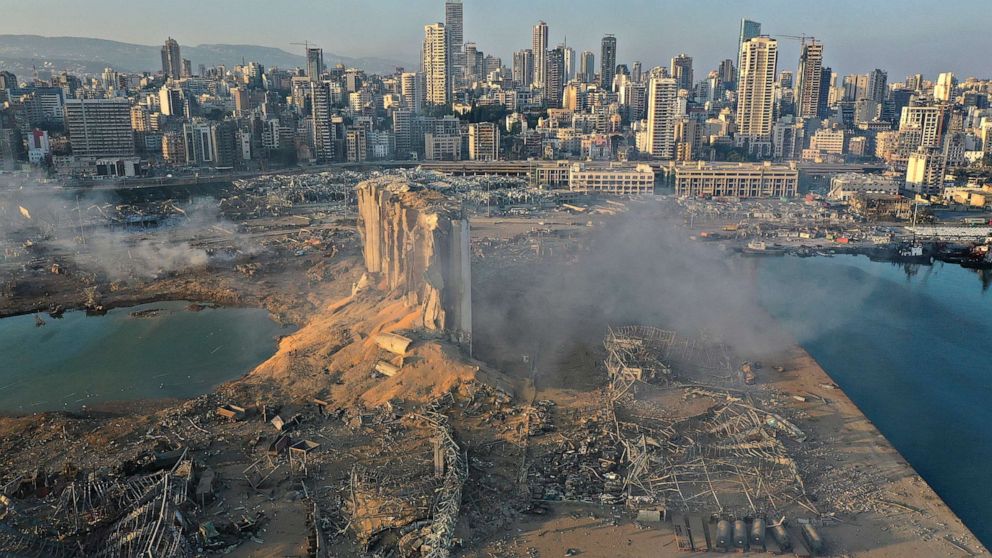“The situation in Lebanon is worse than hell, we cannot allow it to become another Gaza”, this quote from the UN Chief Antonio Guterres sums up the entire situation in the country.
The visuals coming in from Lebanon clearly back his statements. Missile attacks, bomb explosions, buildings in ruins, currently there does not seem to be much difference on the ground between Gaza and Lebanon. The devastating situation is a result of Hezbollah’s entry into the Hamas-Israel war.
Hezbollah gets involved in the Hamas-Israel war
On 7th October 2023, Hamas terrorists unleashed a shocking attack on Israel. To counter the terrorist outfit the Jewish nation began its counter attacking campaign in the region, but in the name of Islamic unity Hezbollah decided to jump in and open another front against Israel.
Post its destruction of Hamas infrastructure in Gaza, it seems Israel has now shifted it complete focus to Lebanon. It looks likely Israel has decided to finish off the Hezbollah threat before Hamas. Post the pager and walkie talkie attacks, Israel has bombarded Lebanon with over 400 missiles, more than 600 people have lost their lives in the attacks with thousands injured while many have fled the region due to the ongoing clashes.
The country’s economy is in a freefall, to put it into context currently one Indian Rupee is equivalent to 1095 Lebanon pounds, and 1 Dollar is equal to 90,000 Lebanon pounds. The country has lost its peace, tranquility and is unable to provide for even the basic needs of its people.
How the Paris of the Middle East Beirut became a ghost city
Lebanon hasn’t always been a war torn nation, once upon a time it was compared to Paris, but today it is on a downward spiral. It is crucial to understand that the true cause of this condition is not Israel but Lebanon itself. The prime reason is the push of religion into the country’s politics.
The Mediterranean country was ruled by the Ottoman Empire for 332 years, from the 15th to the 19th Century. Post the First World war with the fall of the Ottoman Empire, Lebanon became a free country. The freedom was short lived, as soon France took control of the nation. With the end of the second world war and taking advantage of a weakened France, Lebanon secured its freedom once again.
Religious balancing leads to the fall of Lebanon
Freedom brought with it a number of issues. The country is home to over a dozen religions, with Islam and Christianity the outright major ones. The Muslim population is 56 per cent which is divided equally between the Sunnis and Shias while the Christian population is at 35 per cent. This means that the country’s politics revolves around the Shia, Sunni and Christian communities. Due to regular clashes, the three eventually came to an understanding in 1943 where the politics of the country was divided into segments catering to each of the three communities.
According to the resolution, the Sunnis will get the post of the Prime Minister, the Christians the post of the President while the Shias will get the post of the speaker of the house. Although technically with a lower population, the Christians due to their better resources got a good deal in the resolution.
In the Parliament the seats are divided between the communities and further into different sects. But soon religiosity was put aside and the divisions became a way to grab political power and empower their own community. Due to this power race, the Parliament got log jammed as it became next to impossible for the three to agree on any decision. All three communities spent their time and energy lobbying for only their own community and the country became weaker by the day.
Civil War in Lebanon
Post the 1975 civil war the situation in the country deteriorated further. Fleeing the Israel-Palestine war, thousands of Palestinians made their way into Lebanon. The Shias and Christians became especially tensed with this development, as the Palestinians were Sunni Arabs and this meant that the Sunni population would race past the other two and both of them would lose their hold in the country.
Soon militias sprung up, and all three started to clash with each other. The ensuing civil war lasted fifteen years, costing 15000 Lebanon citizens their lives and rendering thousands homeless.
The Birth of Hezbollah
This civil war gave birth to Hezbollah. In the aftermath of the war, the warring leaders became politicians and began running the Lebanese Government. Post the 1979 Islamic Revolution in Iran, the new regime took control of Hezbollah. Since then Israel and Hezbollah have been at each others throats.
In 1982, Israel invaded Lebanon to finish Hezbollah but the subsequent 20 year war ended in a stalemate and Israel decided to fall back. In 2006 Hezbollah again attacked Israel and the Jewish nation proceeded to invade Lebanon once again.
It is incredible to think that to tackle Hezbollah the Israeli army regularly invades Lebanon yet the Lebanese army does nothing to stop either party while they wage wars on its land. Hezbollah is also part of the Government of Lebanon and is directly in control of a number of areas.
All in all the reason for Lebanon’s destruction and its complete lack of decision making ability, is due to the religious reservations dragging the country down. Lebanon does not function as a regular country but only as a divided space for the three communities. The communities are stuck, fighting to just gain an upper hand while stalling the others. This has led to a complete stagnation and deterioration of the country, in which the common public is the number one victim.
